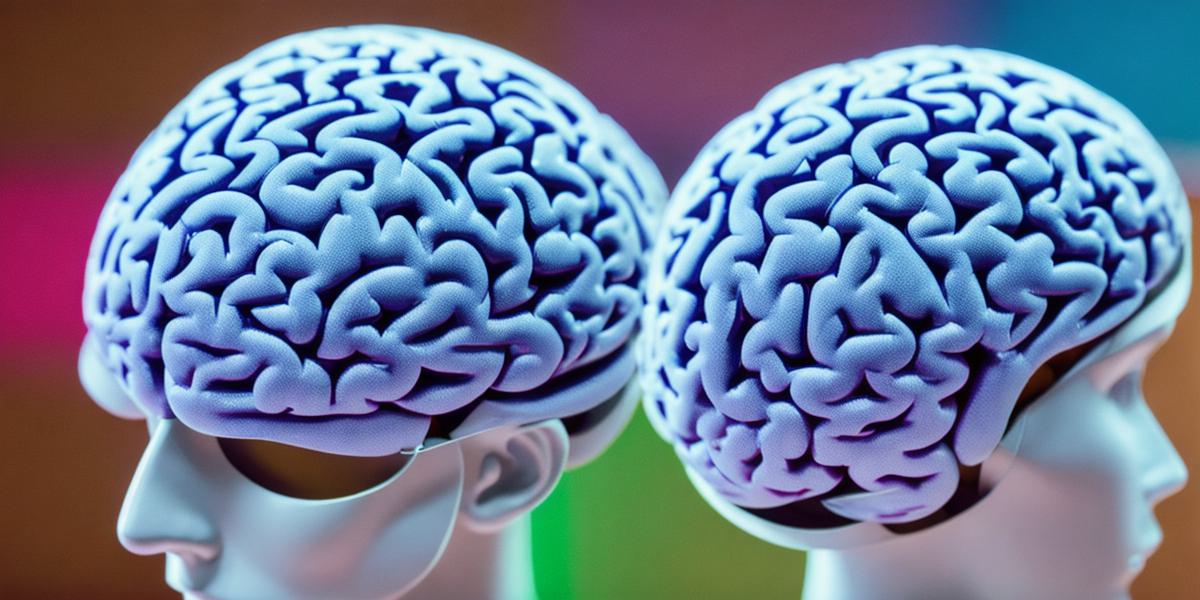Are you tired of traditional neuroscience models that fail to capture the complexity and intricacy of the human brain? Look no further than these creative 3D brain model concepts that are set to revolutionize the field. From virtual reality simulations to cutting-edge technologies, these innovative approaches promise to transform our understanding of the brain and its functions. In this article, we will explore some of the most exciting and promising 3D brain model concepts and their potential applications in AI development.
- Virtual Reality (VR) Simulations
Virtual reality technology has been around for a while, but it is only now that it is starting to be used in neuroscience research. VR simulations allow researchers to create immersive experiences that can mimic real-life scenarios and help them better understand how the brain processes information. For example, a study published in Nature Communications found that VR simulations were effective in treating anxiety disorders by exposing patients to controlled virtual environments that simulated real-world triggers. - 3D Printing
3D printing technology has come a long way since its early days, and it is now being used to create detailed 3D models of the brain. These models can be used to study the structure and function of specific regions of the brain in greater detail than ever before. For example, a study published in the journal NeuroImage found that 3D printing was effective in creating accurate models of the brain that could be used for drug discovery and development. - Artificial Intelligence (AI)
Artificial intelligence is at the forefront of many technological advancements, including those in neuroscience. AI algorithms can be used to analyze large datasets of brain imaging data and identify patterns and correlations that may not be immediately apparent to human researchers. For example, a study published in the journal NeuroImage found that an AI algorithm was able to accurately predict the onset of Alzheimer’s disease based on brain imaging data. - Brain-Computer Interfaces (BCIs)
Brain-computer interfaces are devices that allow humans to communicate with computers using their brains. BCIs have the potential to revolutionize neuroscience by providing researchers with unprecedented access to the inner workings of the human brain. For example, a study published in the journal Nature found that an BCI was able to help a paralyzed patient regain control of his arm and hand using only his thoughts.5. Neuroprosthetics
Neuroprosthetics are artificial devices that can be implanted in the brain to replace lost or damaged functions. These devices can be used to treat a wide range of neurological disorders, including Parkinson’s disease, epilepsy, and paralysis. For example, a study published in the journal Nature found that a neuroprosthetic was able to restore mobility in a paralyzed rat by stimulating specific regions of its brain.
In conclusion, these creative 3D brain model concepts have the potential to revolutionize our understanding of the human brain and its functions. By combining cutting-edge technologies with innovative approaches, researchers can gain unprecedented access to the inner workings of the mind and develop new treatments for a wide range of neurological disorders. As AI developers, it is important to stay up-to-date with these advancements and explore their potential applications in our own work.FAQs:
Q: What are some examples of 3D brain model concepts?
A: Virtual reality simulations, 3D printing, artificial intelligence, brain-computer interfaces, and neuroprosthetics.
Q: How do these 3D brain model concepts work?
A: These concepts use various technologies to create detailed 3D models of the brain that can be used for research and treatment.
Q: What are some potential applications of these 3D brain model concepts in AI development?
A: These concepts can be used to analyze large datasets of brain imaging data and identify patterns and correlations that may not be immediately apparent to human researchers.
